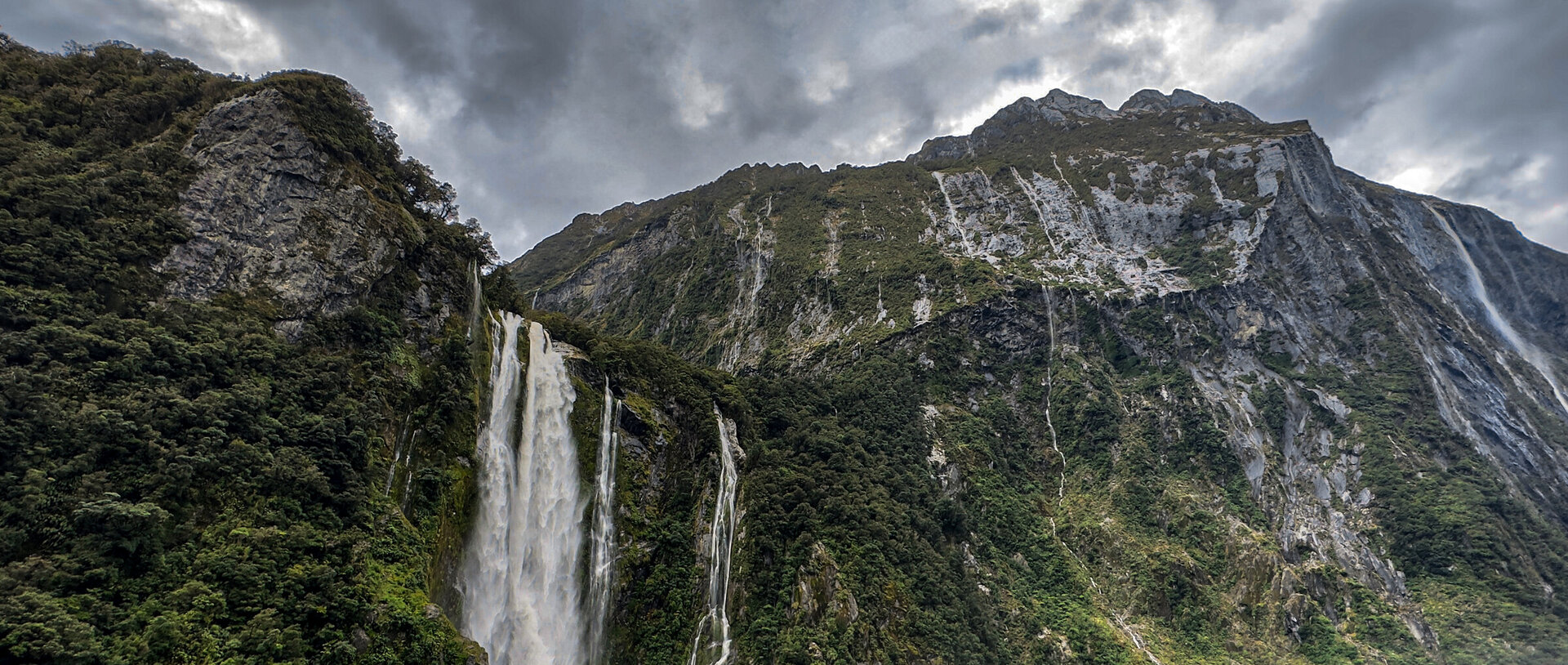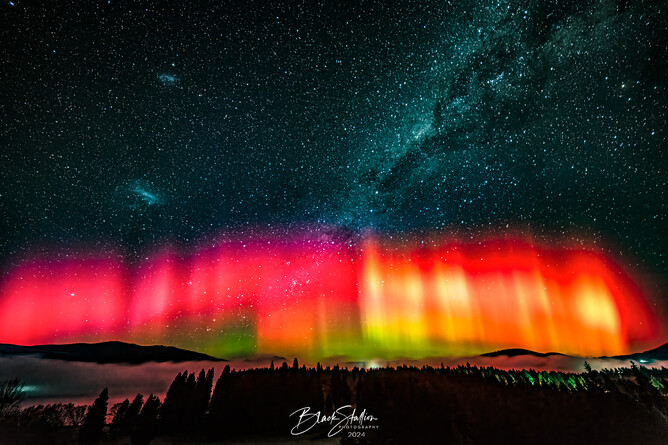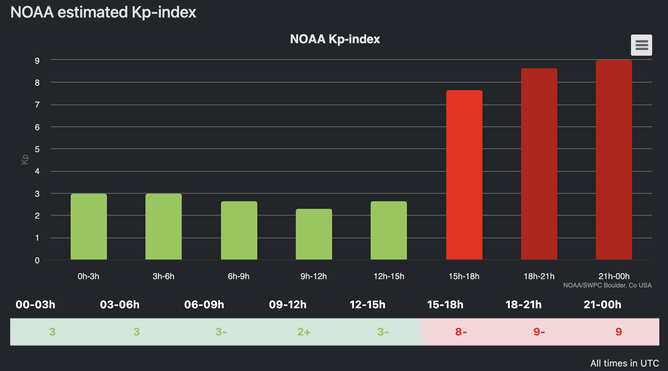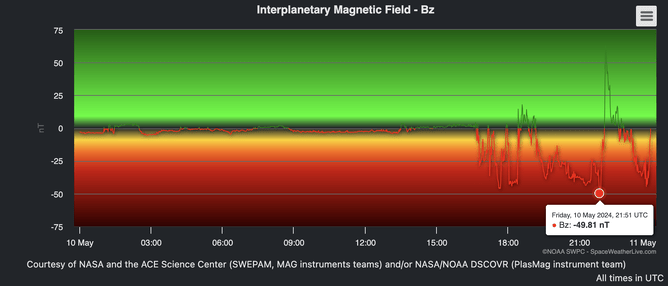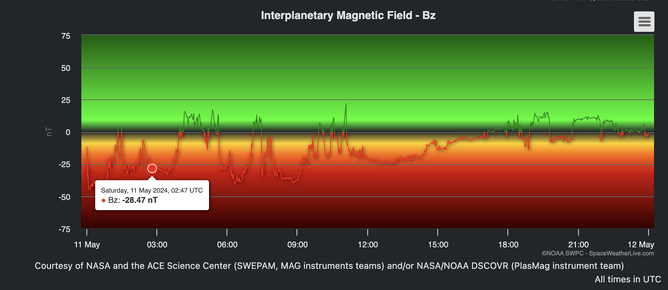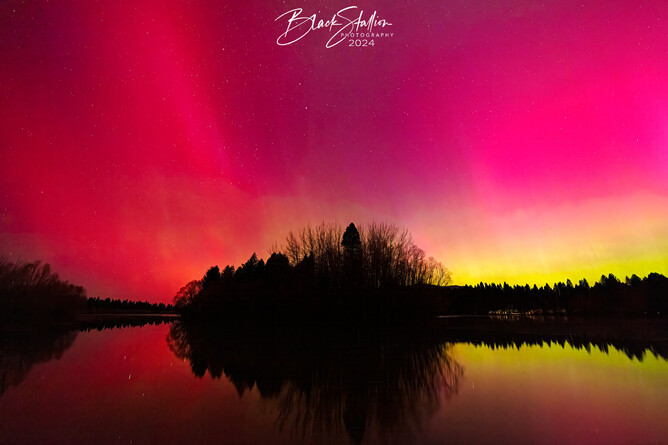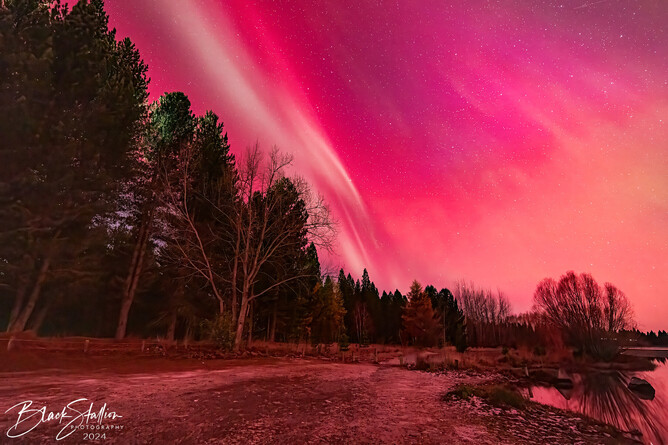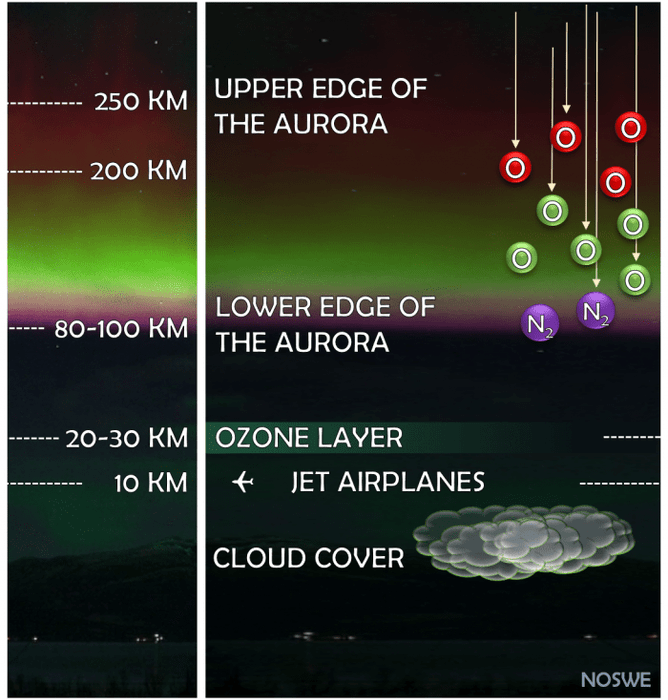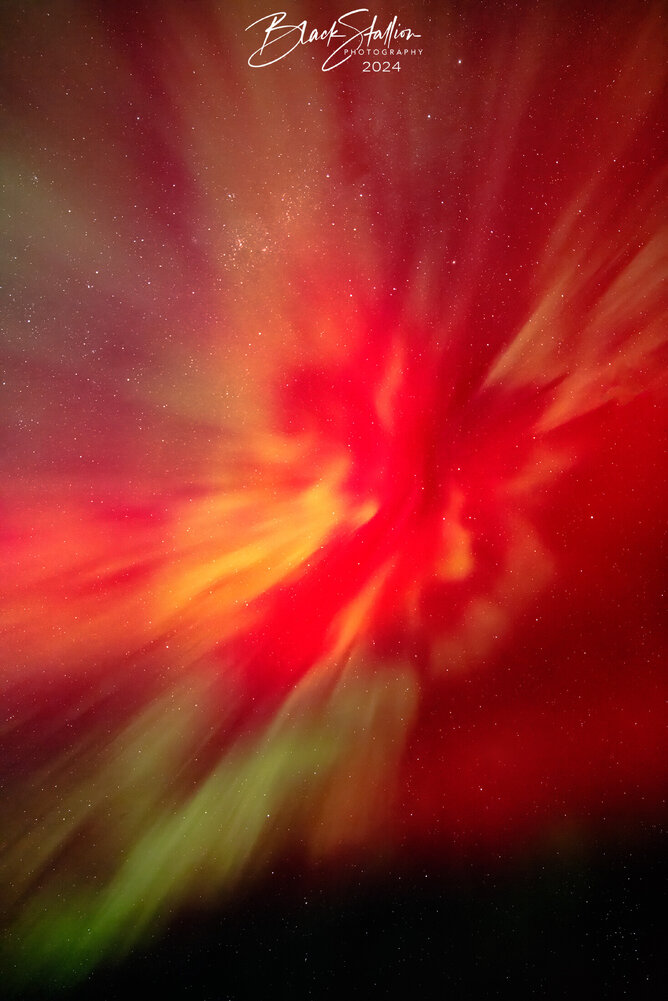I attended an Advanced Astrophotography Workshop organised by Mike White Photography based in Twizel from the 10th of May to the 13th of May, 2024. Little did any of the participants know at the time of signing up that this would be a workshop we would never ever forget. After photographing the night sky on Friday (10th May), we got back to our accommodation and just about managed to get a couple of hours shut eye when we received a message from Mike telling us it was 'GO Time'. The Aurora Australis had come alive. We headed to higher ground so we would be above the fog that was rolling into Twizel. Seen below is the Aurora Australis (Southern Lights) spanning across the horizon over Twizel. Seen also in this image are the Magellanic Clouds and the Milky Way. This was just the appetizer - going by the figures, the main course was yet to be served.
Before I go any further let us have a look at the 'figures' I made mention of earlier to give us a better understanding of how big an event this actually was.
G5 Geomagnetic Storm
7 Coronal Mass Ejections (CMEs)
KP Index 9*
Solar Wind Speed 950 kms/sec*
Interplanetary Magnetic Field -Bz -49.96nT*
Hemispheric power in excess of 300 GW
*Peak Values
One of the participants at the workshop had a solar filter which allows you to take photographs of the Sun without frying your camera equipment. Seen below is a 'back-of-camera' snapshot of the Sun taken during the day on the 11th of May that clearly shows Sunspot AR3664, at the top of the image, that was responsible for the G5 Storm.
After the morning that we had on Saturday 11th May, we were buzzing all day and so were our phones with the constant alerts we were receiving reminding us of the awesome display we were missing out through the day. I tried my best to get some sleep but my brain was running a million miles thinking of compositions and images I would capture at nightfall. We all knew we were in for a long night and no sleep.
Given the strength of the storm, it was no surprise that we could see pink beams with our naked eye when we got to our first location just before sunset. The colours, the magnitude of the aurora and the amount of light the aurora was throwing over the landscape through the night was off-the-charts.
Seen below is an image captured at around 6:30 pm - on a moonless night one would expect to see a dark starry sky but the sky and ground were lit up vibrantly by the colours of the aurora. What struck me was the dark crimson hue that can be seen to the left of the image.
The night of the 11th was a night of many firsts for me:
It was the very first time I had seen and photographed STEVE - a very rare phenomenon that is usually seen only during periods of very high geomagnetic activity. Scientists don't know much about STEVE but it is a phenomenon that has certainly piqued their interest. STEVE is a backronym (reverse engineered acronym) - the phenomenon was first named and then scientists made an acronym out of it. STEVE stands for Strong Thermal Emission Velocity Enhancement.
We were all focussed on the aurora happening in front of us when a few of us happened to look behind and noticed STEVE slowing forming. It was mesmerising to watch as it built in intensity, waving across the sky and then as quickly as it appeared it dissipated and died out. It truly was magical
Another first for me was to see and photograph the auroral corona. I had seen and photographed the corona during the solar storm of the 2nd of December 2023 (Image 1), but at the time I was looking at it. This time around (Image 2) I was right under the corona as it evolved and danced overhead.
Auroral Coronas are extremely rare to see, especially in New Zealand, and they happen predominantly during a very strong geomagnetic storm. So I feel quite lucky to have seen several during the course of the night. Experiencing an auroral corona is a truly unforgettable experience - one that fills you with a sense of awe and wonder at the beauty and grandeur of nature.
Fun Fact: The convergence of auroral rays into an auroral corona is an optical illusion caused by perspective effects. When viewing the lights from a certain angle, the parallel rays appear to converge towards a central point, creating the illusion of a crown or corona. The colours are caused when the atoms and molecules in our atmosphere are excited by the charged particles from the Sun causing them to emit light of various colours. In these images, we predominantly see reds and greens - colours emitted by excited oxygen atoms and molecules at various atmospheric altitudes. Excited nitrogen molecules produce hues of blue and purple.
As a photographer, I've always wanted to capture reflections of an aurora over water and boy did I get opportunities to do that in the wee hours of the morning of the 12th of May.
While I managed to capture some really cool reflection images, the one that I keep coming back to is this one. Everytime I look at this image, it reminds me of The Eye of Sauron and just like the Eye this images keeps drawing you in the longer you look at it. All you Lord of the Rings fans out there will know what I am talking about :)
Now sit back, relax and enjoy some of the images I captured on the night.
